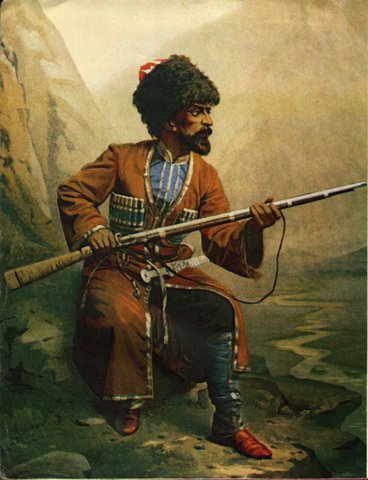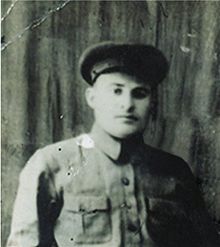
 FOLLOWING FRIDAY’S revelation that the perpetrators of last week’s Boston Marathon bombings originally hailed from Chechnya, the media has been serving up something of a refresher course on the troubled republic, which sits on Russia’s southern border with Georgia.
FOLLOWING FRIDAY’S revelation that the perpetrators of last week’s Boston Marathon bombings originally hailed from Chechnya, the media has been serving up something of a refresher course on the troubled republic, which sits on Russia’s southern border with Georgia.
Even before the world knew anything about Tamerlan and Dzhokhar Tsarnaev, most were likely already somewhat familiar with Chechnya’s recent past, particularly the intermittent war that’s raged there between separatists and the Russian army for 12 of the past 20 years. Sadly, whenever the name of the predominantly Sunni Muslim republic makes the news, it’s more often than not because of tragedy or violence. Consider the 1994 Battle of Grozny, the Beslan school massacre and the 2002 Moscow movie theatre hostage crisis. In fact, much of Chechnya’s distant past is similarly marked by turmoil and bloodshed, some of dating back as far Middle Ages.

The Crossroads of Empires
The 17,000 sq. kms of what is now formally known as the Chechen Republic in Russia lies in the Caucus Mountains between the Black and Caspian seas. The entire region has historically been a battleground between the overlapping fringes of the Ottoman, Persian and Russian empires, all of which struggled for control of the territory between the 15th and 18th centuries. During this period, Chechnya was in a near constant state of conflict.
The Wars with Russia
By the late 18th Century, Russia under Catherine the Great had managed to drive both the Turks and the Persians from the Caucuses, at which point, the Chechens rose in rebellion against the empress, and later the Tsars.
One such uprising was led by Sheikh al-Mansur, an influential imam and warrior who urged the people of the Caucuses to embrace Islam and resist Russian authority. In 1785, al-Mansur and a force of Chechen fighters surrounded and defeated a Russian expeditionary force at the Battle of Sunja. Al-Mansur followed up his victory by assembling an army of 12,000 and invading southern Russia itself. He was defeated at Kizlyar and withdrew to his homeland.
When Russia and Turkey went to war over the region in 1787, the Chechen leader saw an opportunity to carve out an independent state and added his forces to the Ottomans. In 1791, al-Mansur was captured in battle at the Turkish fortress of Apana on the Black Sea. He was imprisoned by the Russians and died in captivity in St. Petersburg in 1794. Al-Mansur is still considered a hero in Chechnya.
Russia cemented its hold on the region following yet another war between 1804 and 1813, this time against the Persians. Four years later, a new Chechen rebellion would break out. Between 1817 and 1859, Muslims from Chechnya and neighbouring Dagestan, under the leadership of a rebel named Imam Shamil, would rise up to fight for independence. The 25-year insurgency was finally crushed when Shamil was captured and brought before Tsar Alexander II. Rather than put the guerrilla leader to death, the Russian ruler exiled him to Kiev, where he lived out his days imprisoned in a lavish mansion.
Chechnya would remain under control of the Tsars into the 20th Century, but would rebel repeatedly throughout the period, most often when Russia’s attention was focused on other threats. Chechen uprisings coincided with the political instability following Russia’s disastrous war against Japan in 1904 to 1905, amid the chaos of the First World War and Russian Revolution, and during the Russian civil war of 1918 to 1922.

Chafing Under Soviet Rule
Not even Stalin could keep a lid on unrest in the Caucuses.
Chechnya rebelled again in the 1940s following the Soviet Union’s ill-fated war in Finland. During this period, a one-time communist turned Chechen nationalist named Khasan Israilov organized a guerrilla army of 5,000 and managed to drive Soviet interior ministry troops out of the region.
Then in June of 1941, when Hitler invaded the U.S.S.R., Israilov declared Chechen independence. Unable to detach troops to suppress the rebellion, Moscow simply bombed Chechnya from the air, inflicting widespread casualties, mostly on civilians.
By 1942, Israilov broadened the insurgency to include neighbouring Ingushetia and Dagestan. As many as 60,000 defectors from the Red Army joined his ranks. Most were themselves natives of the Caucuses.
As Hitler’s Panzers drove deeper into southern Russia, Israilov made contact with the Germans. Berlin even dropped commandos into Grozny to secure the strategically vital Chechen oilfields ahead of the Panzer spearhead. The operatives linked up with the Chechen rebels and coordinated a number of attacks on Soviet forces in the area.
Despite this cooperation, a lasting alliance between the Germans and Chechens never materialized. Israilov sought formal diplomatic recognition of his independent republic from Berlin; none was not forthcoming. Worse, Axis coordination with various Cossack groups in the region further alienated the Chechens who had an ancestral hatred for the ancient Russian warriors. The overtures were enough for Stalin to openly declare that the Chechens were in league with the Nazis — an assertion he would use to justify a brutal crackdown in the region later.
Ultimately, the German advance stalled at Malgobek, a mere 100 kms from the Chechen capital. Soviet counter attacks held the Germans in check and by 1943, with the Axis defeated at Stalingrad, the Germans began a gradual retreat from southern Russia.
Subsequent sweeps of the area by the resurgent Red Army scattered the Chechen rebels, with many turning themselves in to the Soviets in hopes of leniency. Most were deported, some were shot. Israilov remained in hiding until 1945, when it was reported that he had been killed by Soviet troops.
While Moscow forcibly resettled many inhabitants of the region following the war, bands of Chechen holdouts continued to harass Soviet authorities into the 1950s.
The Chechen independence movement would emerge again with the collapse of the Soviet Union in 1991.
In 1994, Russian troops reasserted control over the region in a bloody two-year war that levelled Grozny and left more than 100,000 Chechens dead. A second conflict would break out in 1999 and sputter on for a decade.









